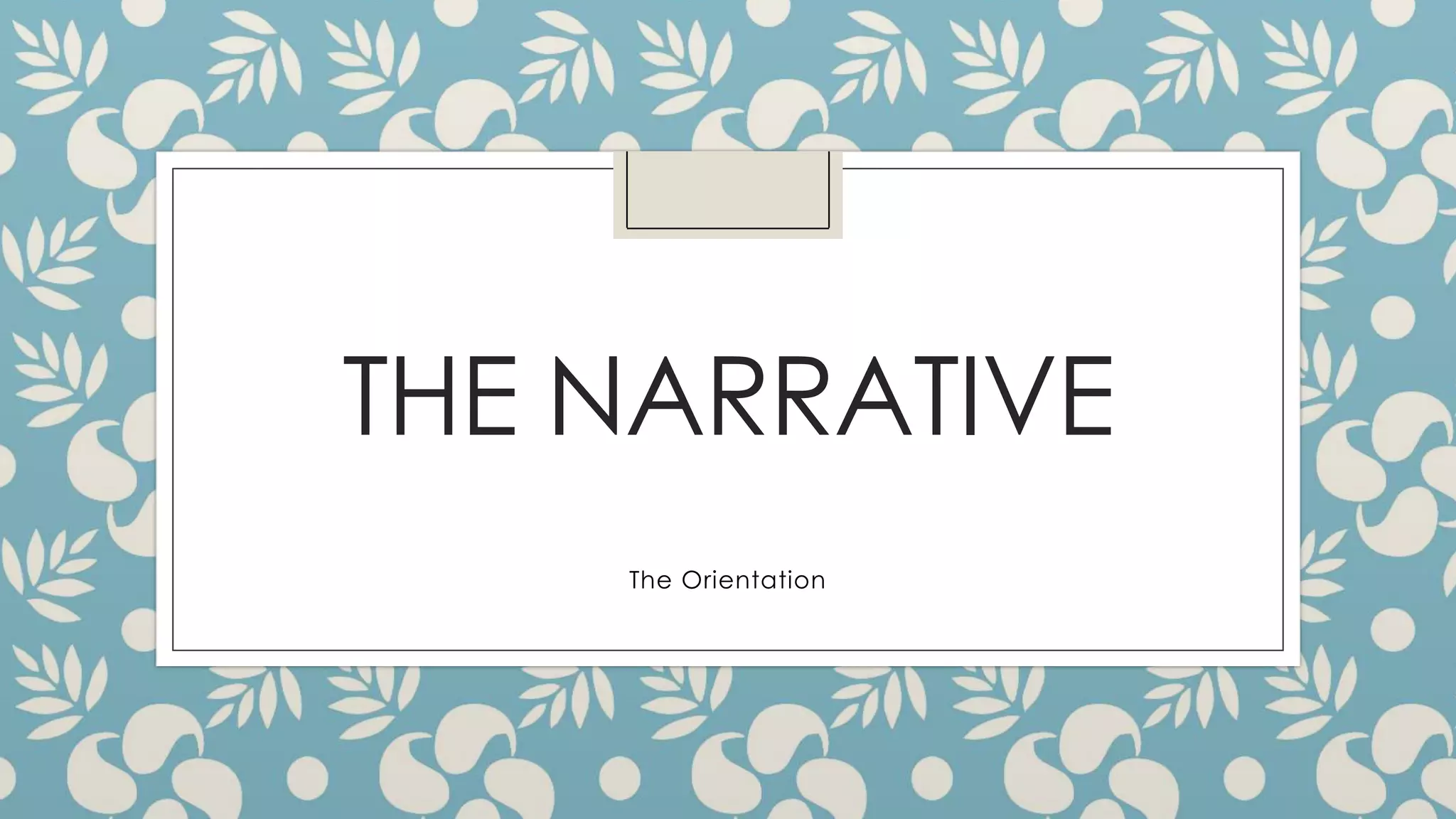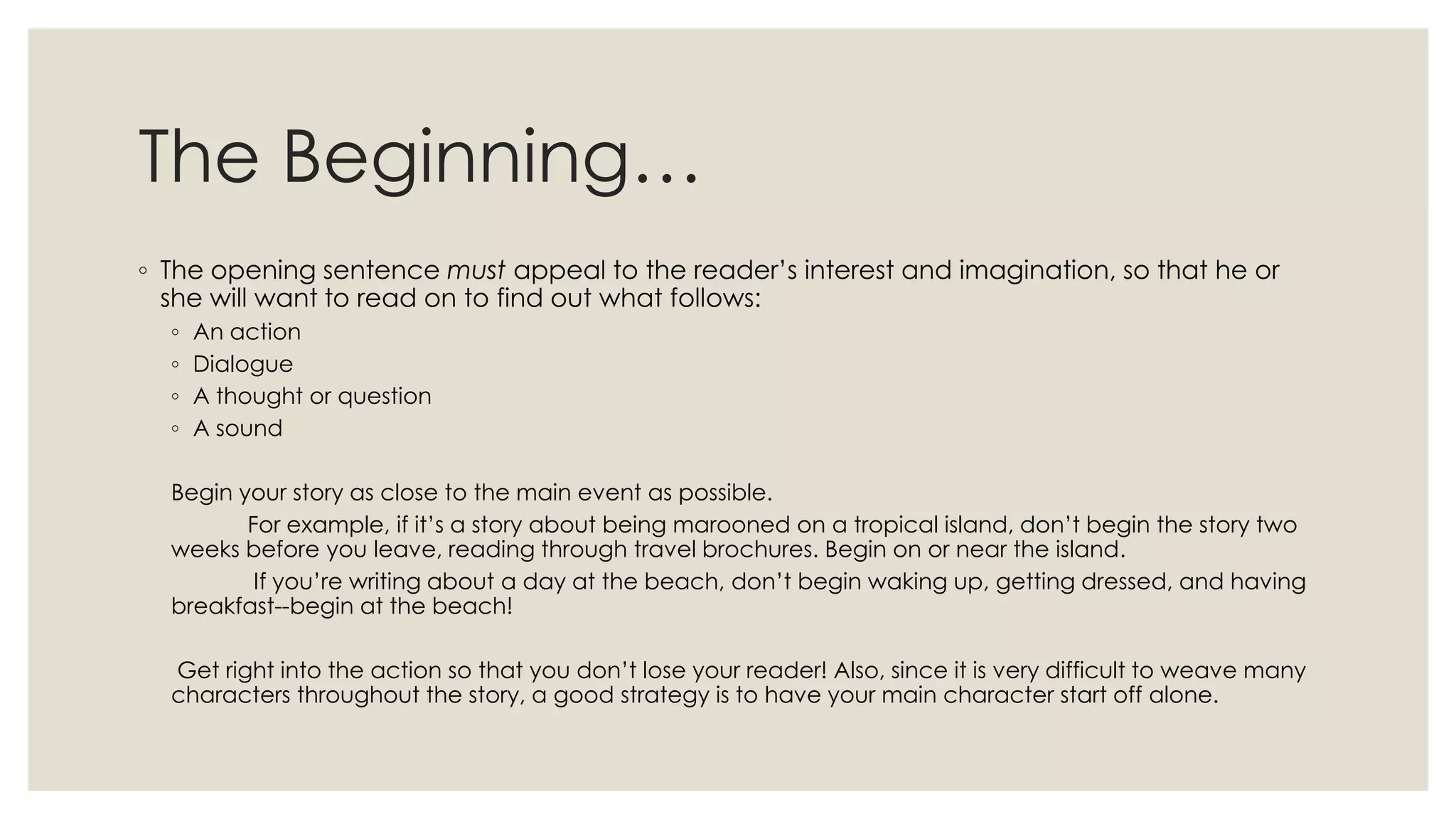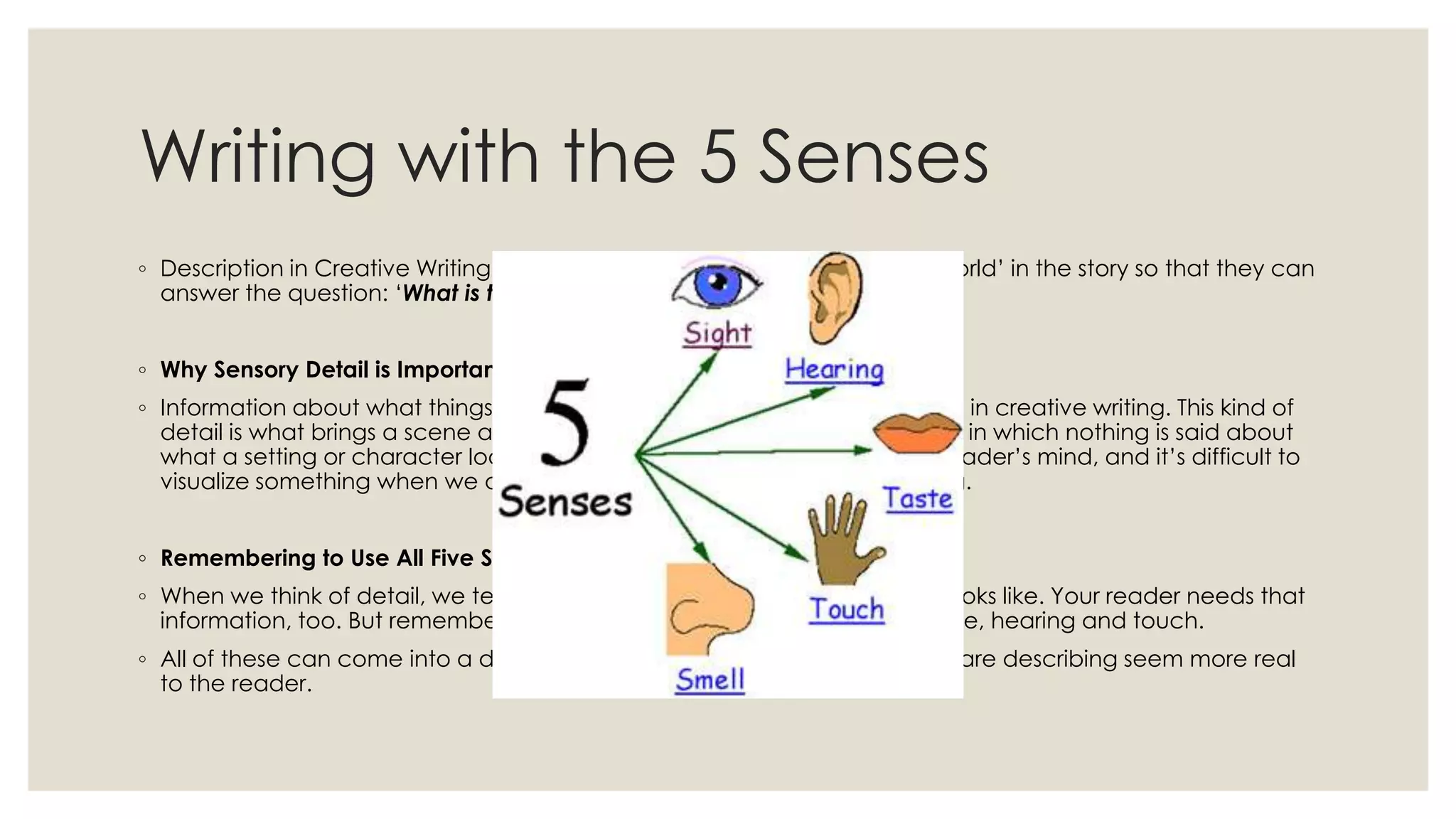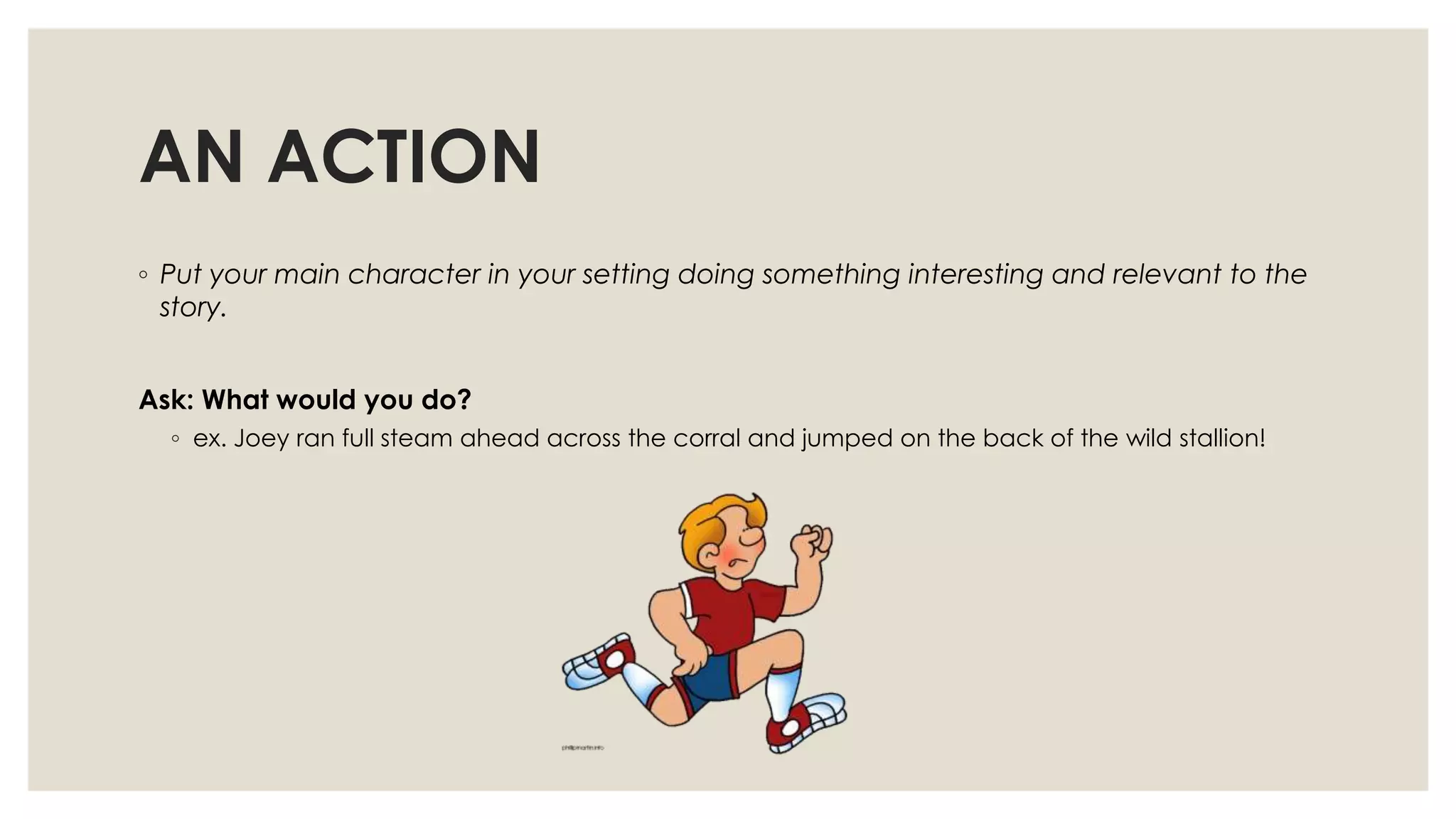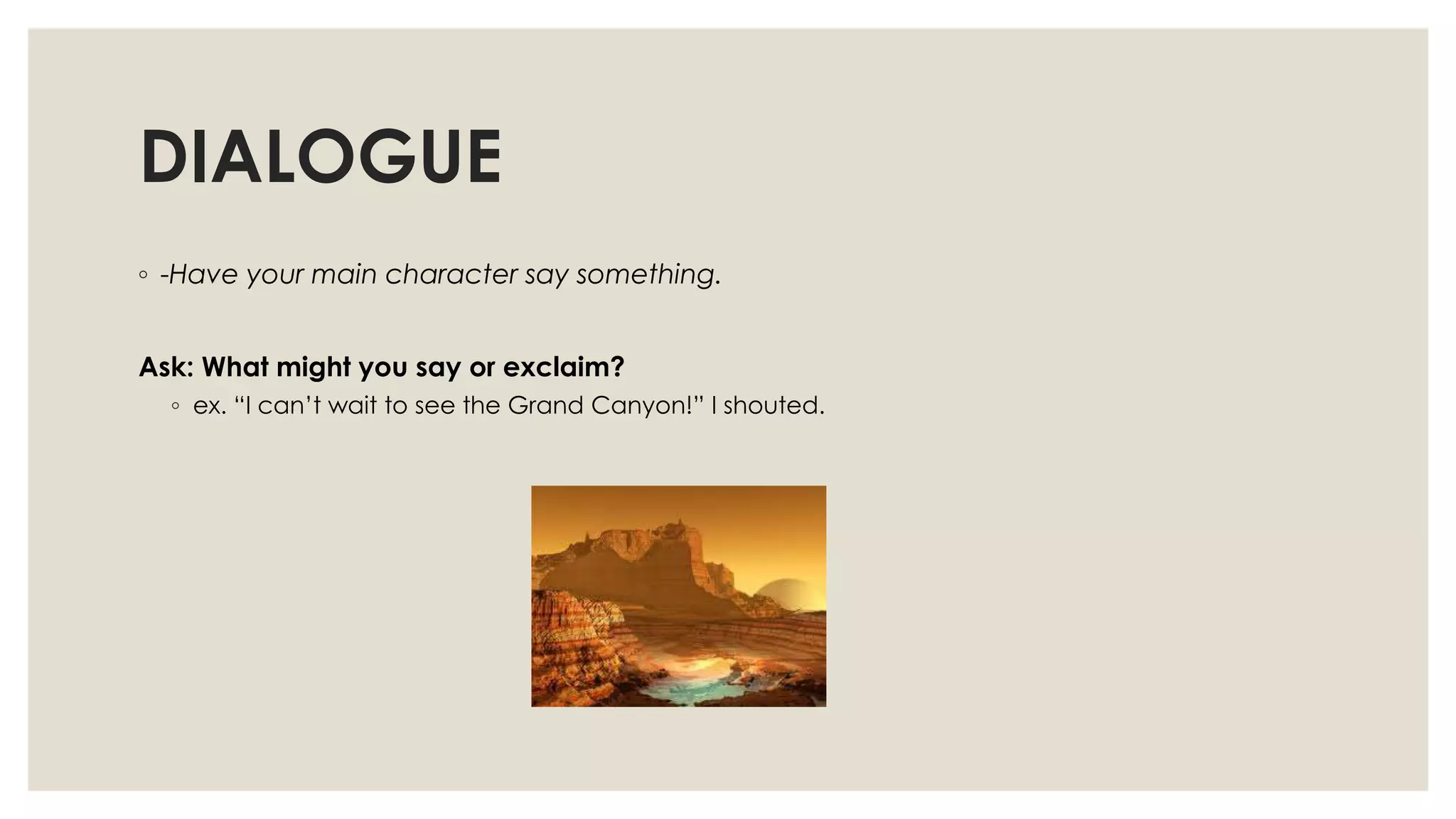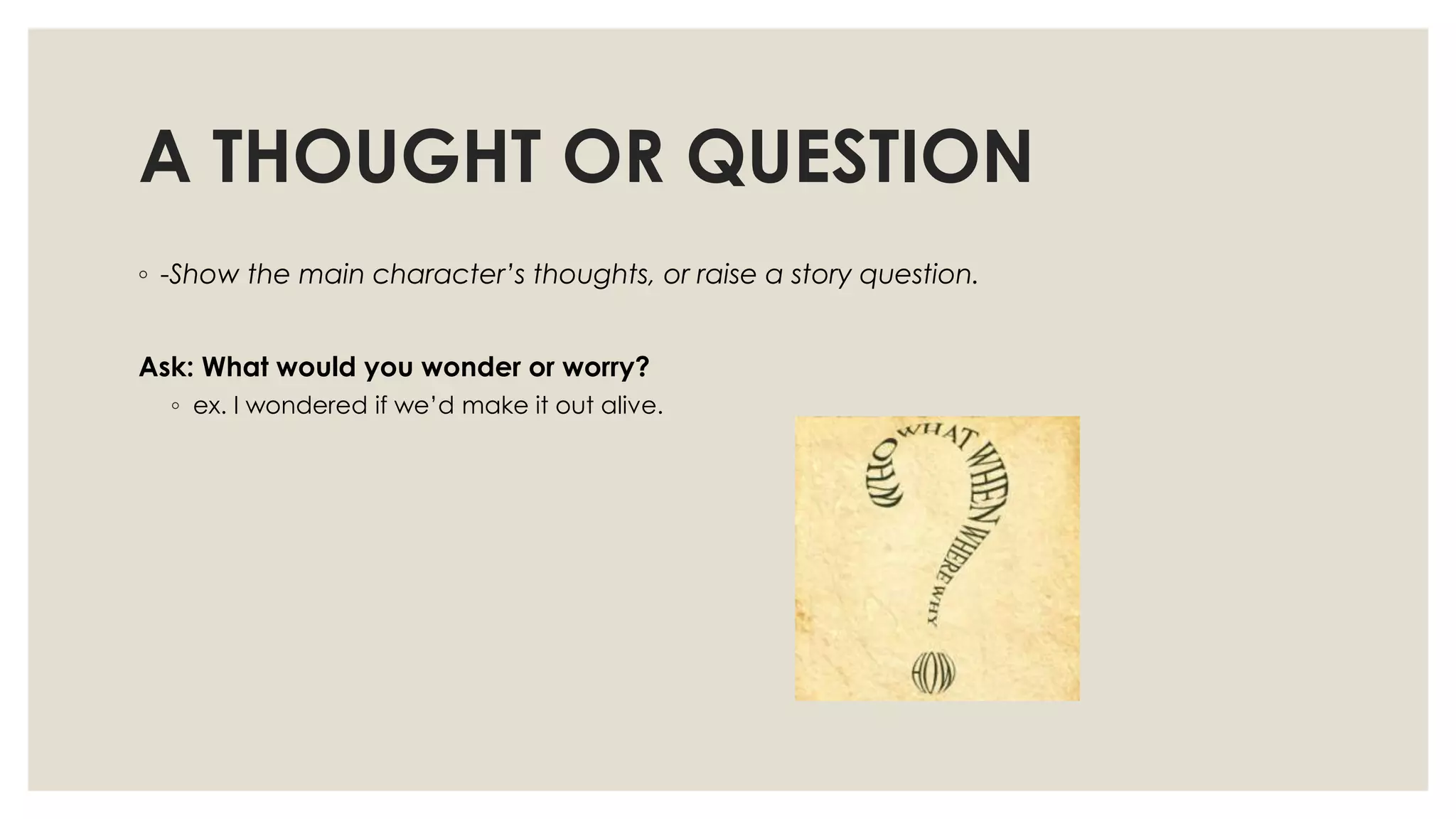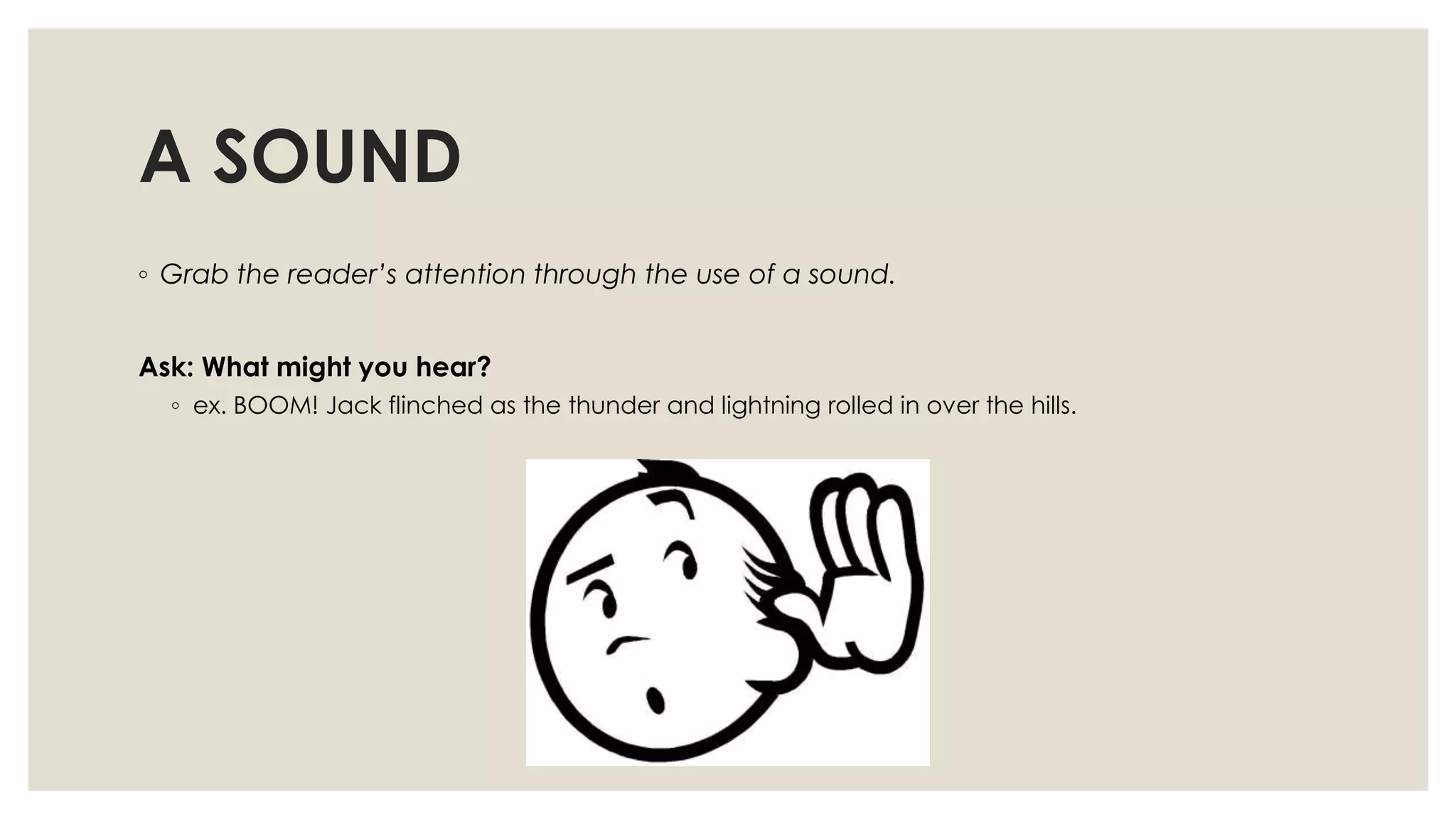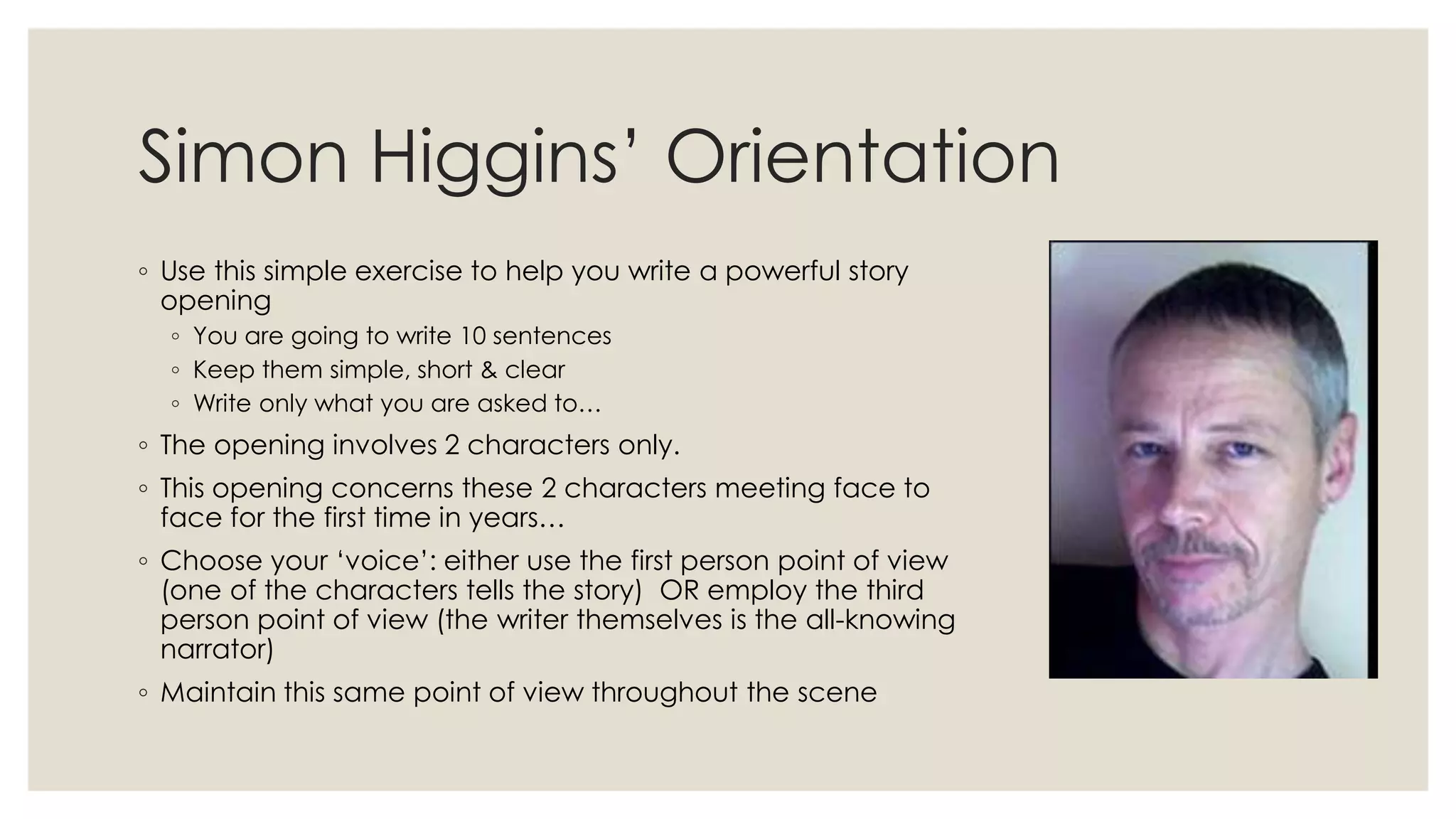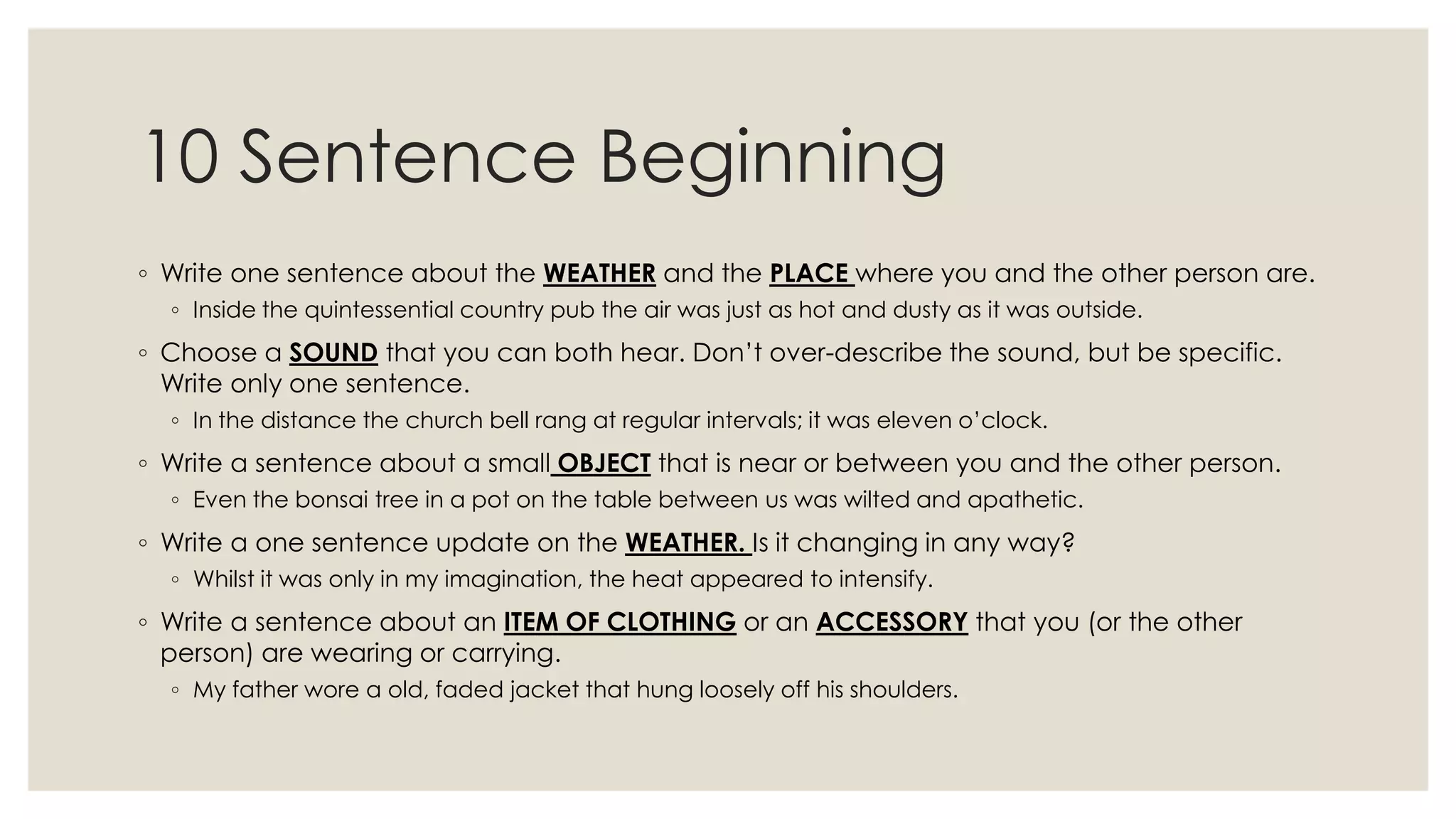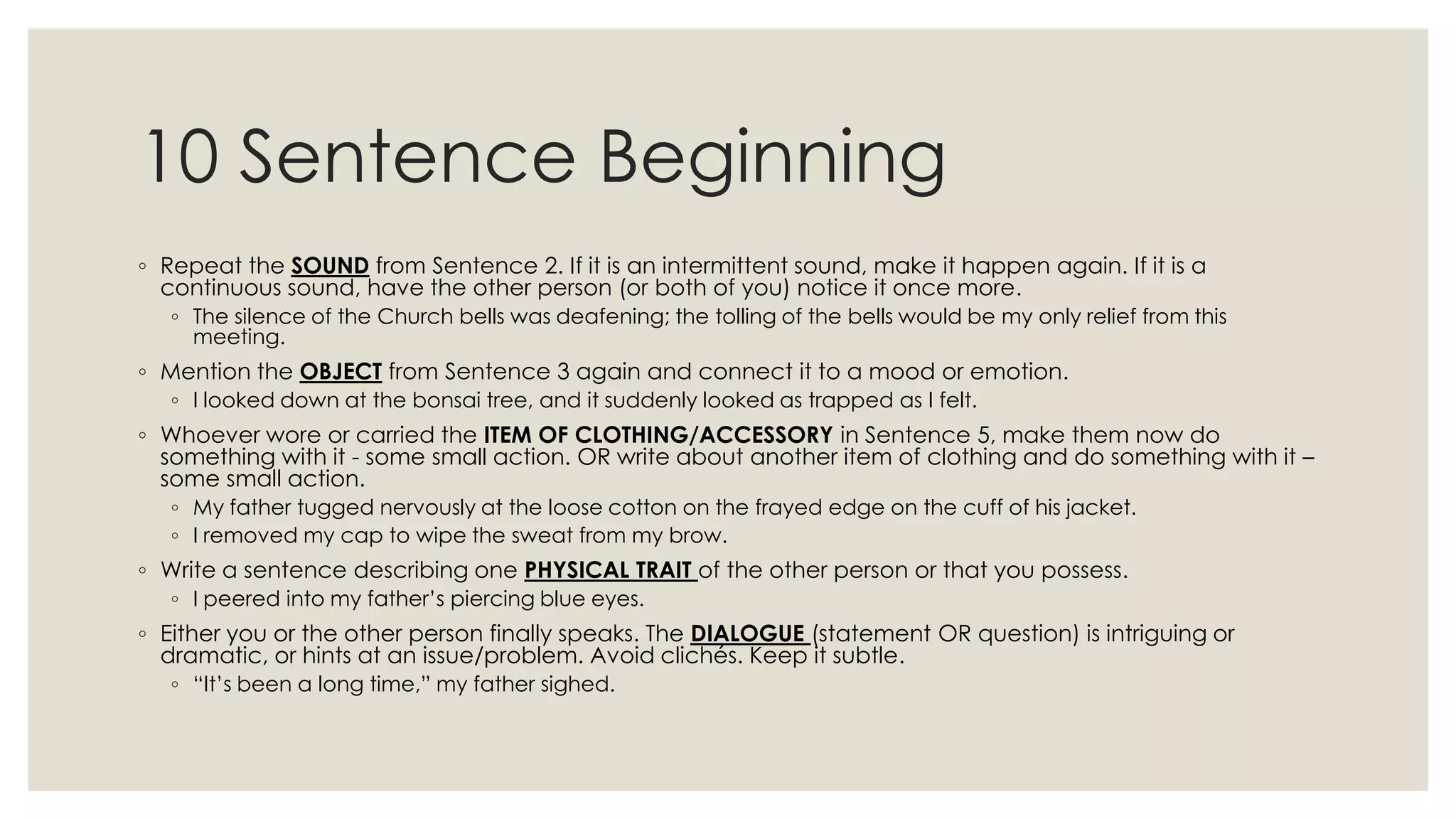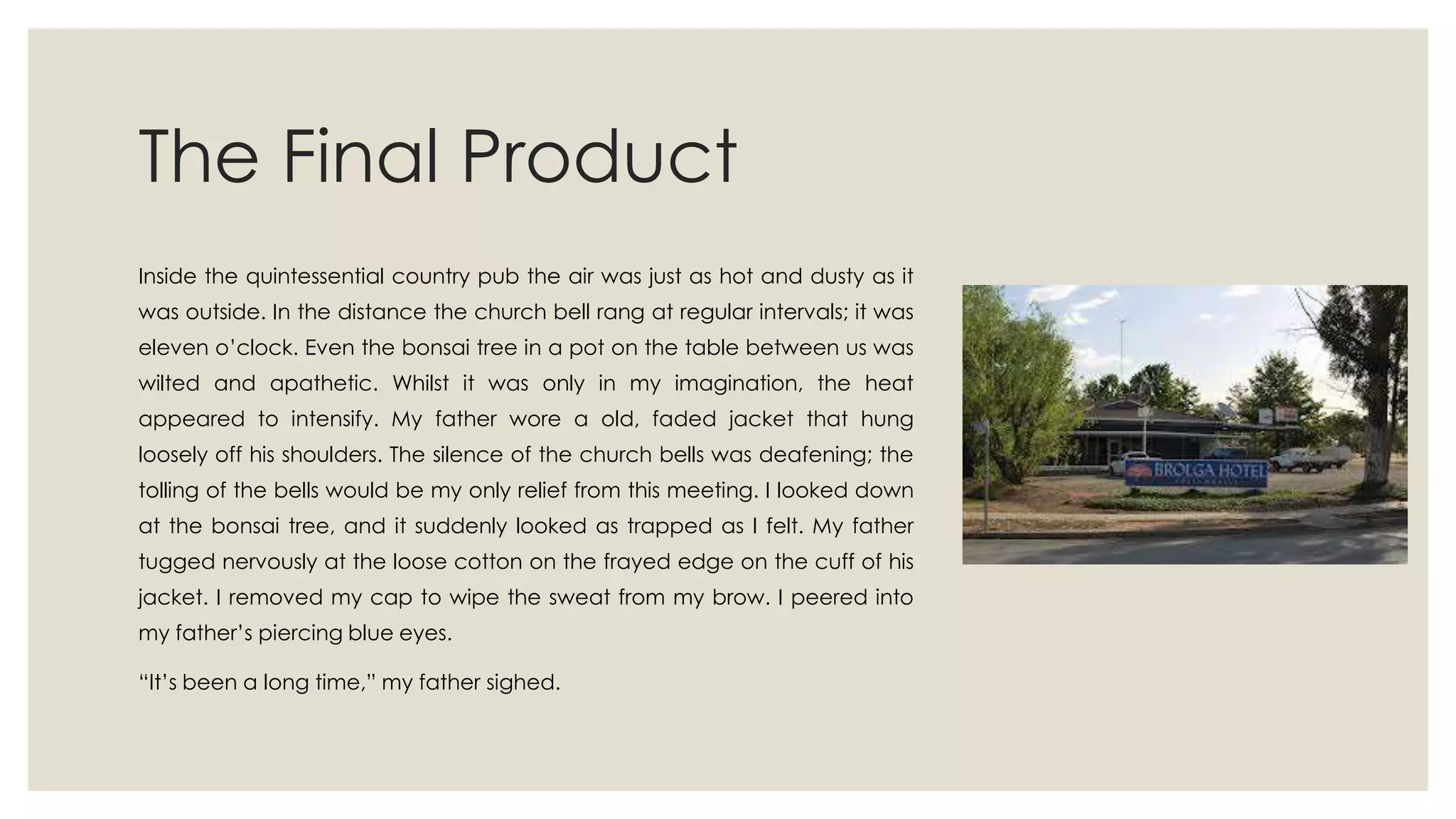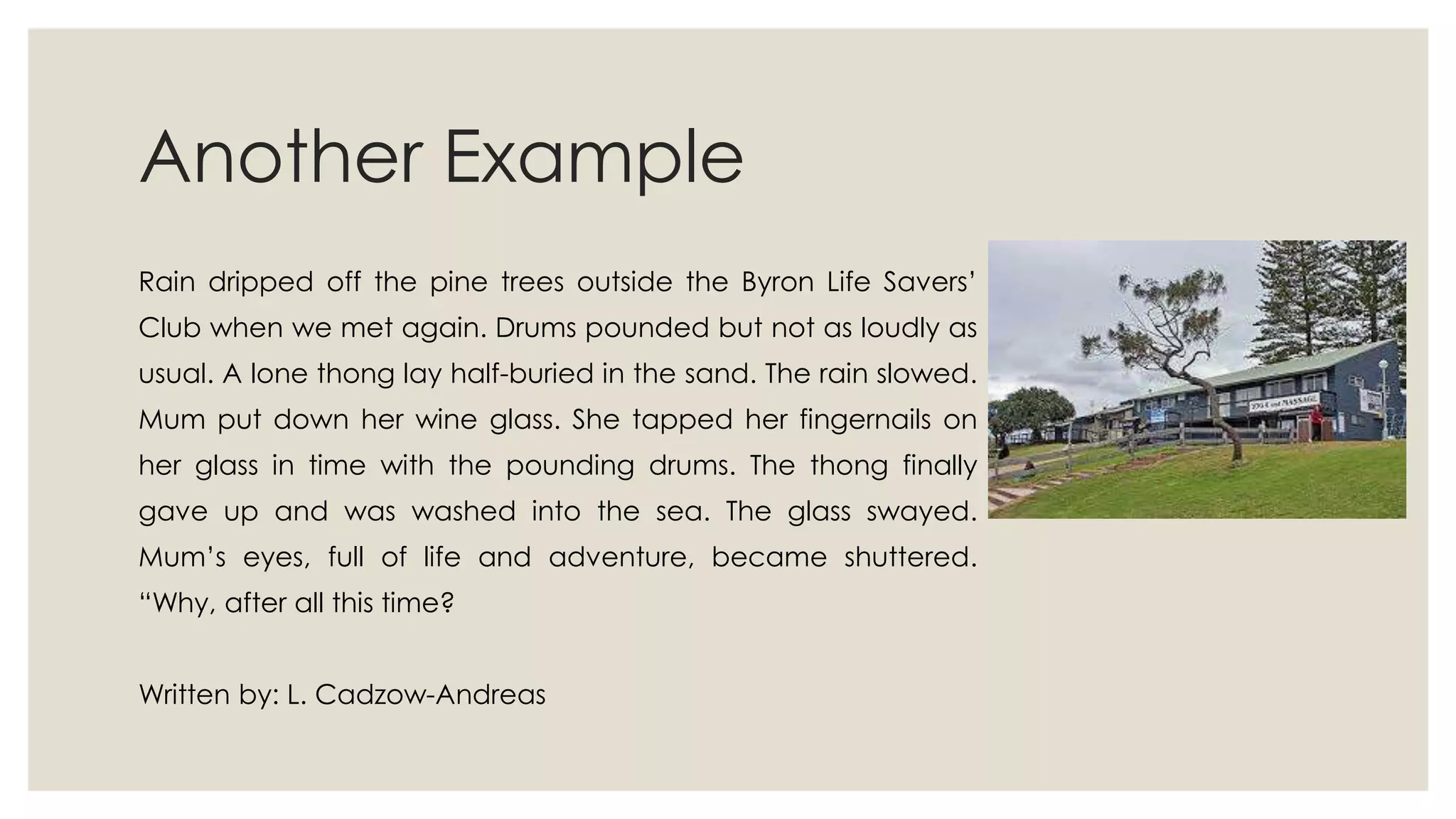The document provides guidance on writing effective story openings in 3 sentences or less. It recommends beginning stories close to the main event to engage readers immediately. It suggests starting with action, dialogue, thoughts, or sounds involving the main character alone to simplify weaving in multiple characters. The document also stresses using sensory details of sight, smell, taste, hearing and touch to bring scenes to life for readers. It then provides a 10-sentence exercise to practice crafting a powerful opening by focusing on elements like weather, sounds, objects, clothing and dialogue.
